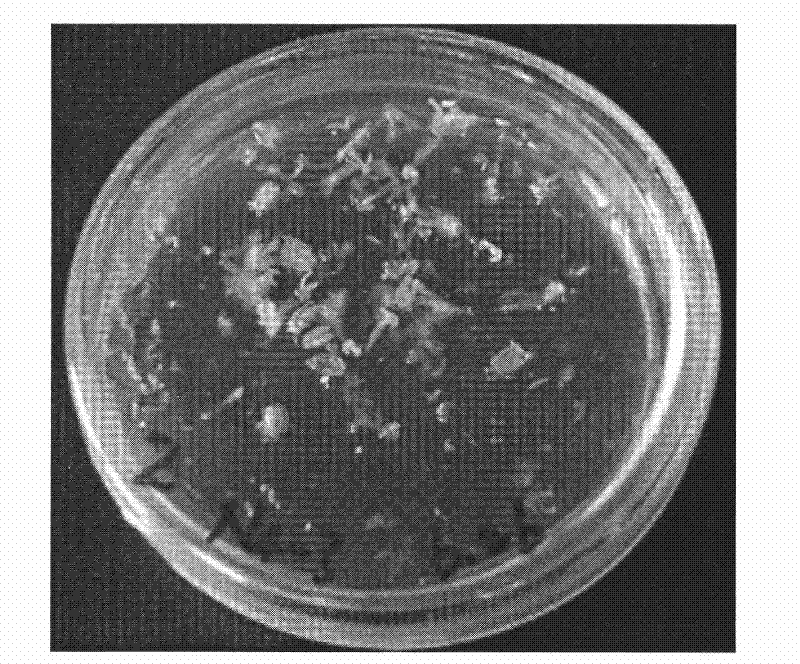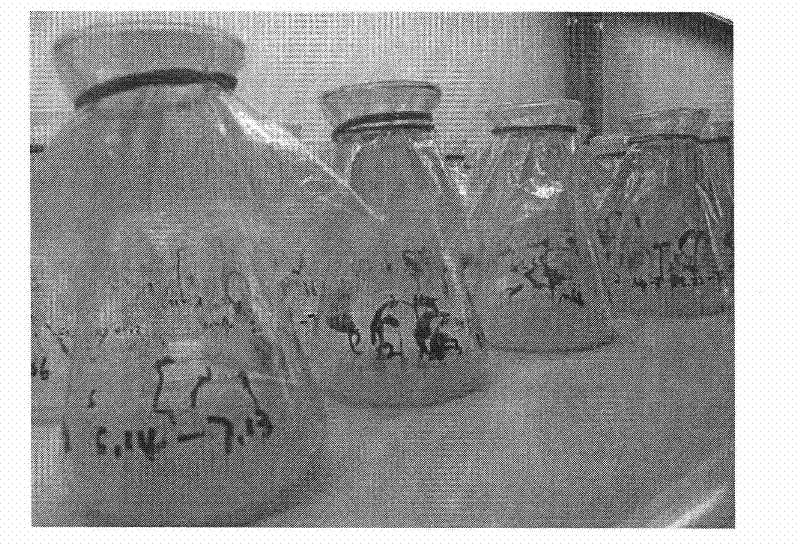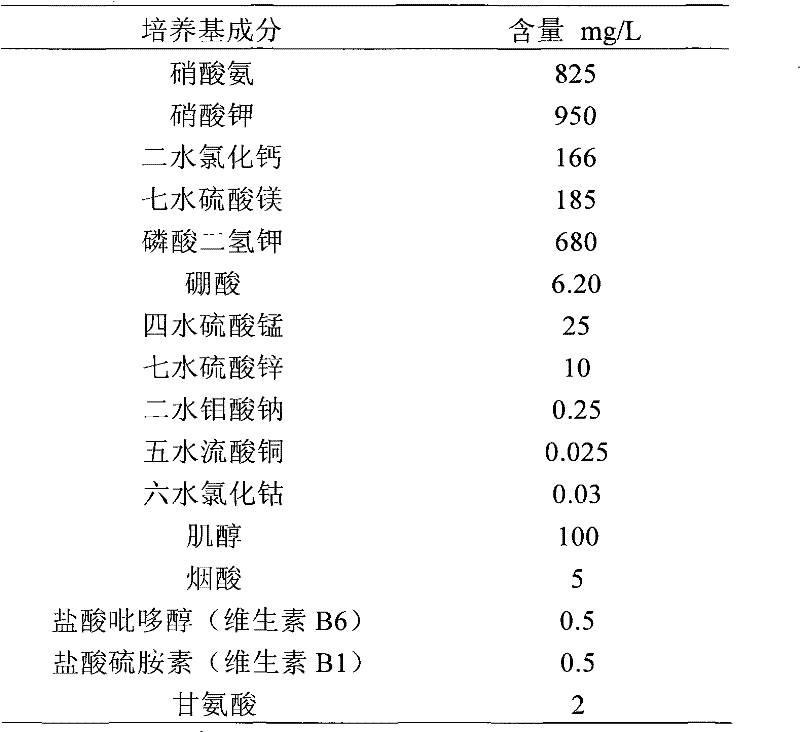Method for obtaining dihaploid plants of sweet peppers
A double haploid, sweet pepper technology, applied in the biological field, can solve the problems of restricting the wide application of sweet pepper, waste of haploid plants, unsatisfactory doubling effect, etc., to achieve the inhibition of spindle formation, equivalent doubling effect, and cultivation The effect of improving efficiency
- Summary
- Abstract
- Description
- Claims
- Application Information
AI Technical Summary
Problems solved by technology
Method used
Image
Examples
Embodiment 1
[0032] The concrete steps of sweet capsicum double haploid cultivation method of the present invention are as follows:
[0033] (1) Select a plant with good growth and no pests and diseases as the donor plant, select flower buds whose microspore development is in the single-nucleate marginal stage to the early binucleate stage, and pretreat the flower buds at a low temperature of 4°C for 1-3 days according to the results of microscopic examination;
[0034] (2) Take flower buds of appropriate size, peel off the calyx, soak them in 75% (v / v) alcohol for 30 seconds, then sterilize them with 8-10% (v / v) sodium hypochlorite for 10-20 minutes, and finally use aseptic Wash with water 3 times, 3-5min each time;
[0035] (3) Peel off the anthers intact on the workbench, and inoculate them on the N4-3 solid-liquid double-layer medium with a density of 12-18 anthers per 60mm diameter petri dish. The formula of the N4-3 medium is:
PUM
 Login to View More
Login to View More Abstract
Description
Claims
Application Information
 Login to View More
Login to View More - R&D
- Intellectual Property
- Life Sciences
- Materials
- Tech Scout
- Unparalleled Data Quality
- Higher Quality Content
- 60% Fewer Hallucinations
Browse by: Latest US Patents, China's latest patents, Technical Efficacy Thesaurus, Application Domain, Technology Topic, Popular Technical Reports.
© 2025 PatSnap. All rights reserved.Legal|Privacy policy|Modern Slavery Act Transparency Statement|Sitemap|About US| Contact US: help@patsnap.com



